|
The American Beaver
(Castor canadensis) was named Oregon
State ANIMAL on April 4, 1969.
Oregon is known as the "Beaver State,"
and Oregon State University's athletic teams are
called the "Beavers." |
Milk
was named the State BEVERAGE in
1997 because milk production and the manufacture
of dairy products are major contributors to the
economy of Oregon. |
|
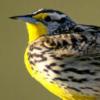 |
Oregon
schoolchildren chose the Western Meadow Lark
(Sturnella neglecta) as the State BIRD
in 1927, as the result of a poll sponsored by the
Oregon Audubon Society. |
Reedsport
was designated the Official CHAINSAW
CARVING CAPITAL of Oregon in 2011. [city website] |
|
| |
Navy Blue
and Gold were named the Official
State COLORS in 1959. |
Oregon designated
the Dungeness Crab (Cancer
magister) as the Official State CRUSTACEAN
on June 19, 2009, the result of petitioning by
the 4th grade class of Sunset Primary School in
West Linn. |
|
| |
Following a trend
set by several other states, the Square
Dance was designated the official State DANCE,
on July 1, 1977. |
John
McLoughlin was officially named the FATHER
OF OREGON in 1957. |
|
|
The Chinook
Salmon (Oncorhynchus tshawytscha)
was declared the official State FISH
in 1961. The largest of the Pacific salmons, the
Chinook is highly prized for the fresh fish trade
and draws thousands of fishermen to Oregon every
year. |
Adopted in 1925,
the Oregon State FLAG is navy
blue with gold lettering and symbols. The front
of the flag features the shield from the State
Seal surrounded by 33 stars (symbolizing that
Oregon was the 33rd state); "STATE OF
OREGON" is above the shield, and
"1859" (the year of Oregon's admission
to the Union) is below. Oregon is the only state
in the Union whose flag has a different pattern
on the reverse side -- the silhouette of a
beaver, the State Animal. The dress or parade
flag has a gold fringe; the utility flag has a
plain border. |
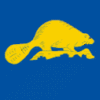 |
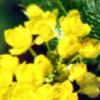 |
The Oregon
Grape (Mahonia aquifolium) was
named the State FLOWER in 1899,
following a vote amongst members of the Oregon
Historical Society. |
Metasequoia
(dawn redwood) was named the State FOSSIL
in 2005. Metasequoia fossils are found
embedded in rocks across the Oregon landscape,
and its designation as State Fossil was part of a
long-term effort to draw attention to Oregon's
paleontologic and geologic resources. |
|
|
The Pear
(Pyrus commuis) was designated the State
FRUIT on May 5, 2005. A variety
of pears are grown in Oregon, including Comice,
Anjou, Bosc, and Bartlett, and the pear is the
top-selling fruit crop in the state. |
Oregon
Sunstone was designated the State GEMSTONE
in 1987. The gem attracts collectors and miners
and has been identified as a boon to tourism in
southeastern Oregon, where it is found in
abundance. |
|
| |
In 1969 the Oregon
legislature designated Miss Oregon
as the Official State HOSTESS
during her reign. [Miss
Oregon website] |
The Oregon
Swallowtail (Papilio oregonius)
was designated the State INSECT
on July 16, 1979 because it is one of the few
butterflies truly native to the Northwest. |
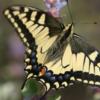 |
 |
Oregon designated Saccharomyces
cerevisiae (commonly known as
brewer's yeast or baker's yeast) as the Official
State MICROBE in 2013. |
Oregon designated Tabitha
Moffatt Brown as the MOTHER OF
OREGON in 1987. In 1846, 66-year-old
Tabitha joined a wagon train from Missouri to
Oregon, suffering much hardship and loss before
arriving in Salem. She went on to build a home
and school for orphans, and helped start the
Tualatin Academy in Forest Grove to educate young
children (which later expanded to launch Pacific
University). |
|
| |
She
Flies with Her Own Wings was
adopted as the State MOTTO by
the Legislature in 1987. The phrase originated
with Judge Jessie Quinn Thornton and was pictured
on the territorial seal in Latin: Alis Volat
Propiis. |
The Legislature
named the Pacific Golden Chanterelle
(Cantharellus formosus) the State MUSHROOM
in 1999. This wild, edible mushroom is unique to
the Pacific Northwest, and more than 500,000
pounds of them are harvested annually in Oregon. |
|
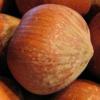 |
The Legislature
named the Hazelnut (Corylus
avellana) as the State NUT
in 1989 because 99 percent of the total U.S.
commercial crop of Hazelnuts is grown in Oregon. |
The Happy
Canyon Indian Pageant and Wild West Show
was named the Official State OUTDOOR
PAGEANT AND WILD WEST SHOW in 2011. [website] |
|
 |
The Legislature
named the Thunder-Egg (geode) as
the State ROCK on March 29,
1965, after rockhounds throughout the state voted
it first choice. |
The State SEAL
consists of an escutcheon (shield) supported by
33 stars and divided by an ordinary (ribbon) with
the inscription "The Union" (the State
Motto until 1987). Above the ordinary are the
mountains and forests of Oregon, an elk with
branching antlers, a covered wagon and ox team,
the Pacific Ocean with setting sun, a departing
British man-of-war signifying the departure of
British influence in the region and an arriving
American merchant ship signifying the rise of
American power. Below the ordinary is a
quartering with a sheaf of wheat, plow and
pickax, which represent Oregon's mining and
agricultural resources. The crest is the American
Bald Eagle. Around the perimeter of the seal is
the legend "State of Oregon 1859." The
seal was designed by Benjamin F. Burch, L.F.
Grover and James K. Kelly. |
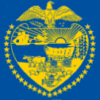 |
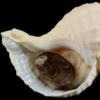 |
Fusitriton
oregonensis was the scientific name given to
the Oregon Hairy Triton by a
conchologist (shell expert) in 1848. Reaching
lengths up to five inches, it is one of the
largest seashells found in Oregon. The
Legislature named it the State SEASHELL
on October 1, 1991. |
Oregon designated Jory
Soil as the Official State SOIL
in 2011. Named after Jory Hill in Marion County,
Jory soils are deep, well-drained soils that
formed in the foothills surrounding the
Willamette Valley. |
|
| |
Oregon,
My Oregon was written by
J.A. Buchanan (of Astoria) and Henry B. Murtagh
(of Portland) in 1920. With this song, Buchanan
and Murtagh won a statewide competition sponsored
by the Society of Oregon Composers. It was
designated the State SONG in
1927. [lyrics] |
Oregon designated
the Champoeg Historical Pageant
as the Official STATEHOOD PAGEANT in
1987. [website] |
|
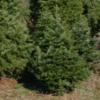 |
The Douglas
Fir (Pseudotsuga menziesii) was
named for David Douglas, a 19th-century
Scottish botanist. It was designated the State TREE
in 1939. |
|
|
 SKC Films Library
SKC Films Library








